THE LEADING CAUSE OF BLINDNESS IN THE WORLD (CLINICAL RESEARCH ORIENTED )
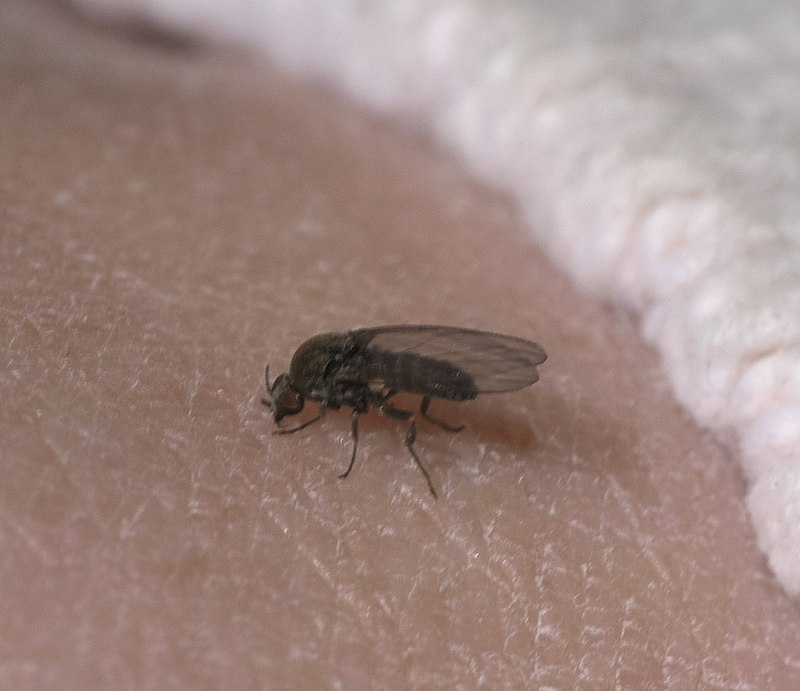 Onchocerca volvulus is the leading cause of blindness in the world . This organism causes onchoceriasis also known as river blindness because of its invasion of eye lead to loss of vision and the vector transmitting this organism is highly associated with rivers , hence, River blindness.
Onchocerca volvulus is the leading cause of blindness in the world . This organism causes onchoceriasis also known as river blindness because of its invasion of eye lead to loss of vision and the vector transmitting this organism is highly associated with rivers , hence, River blindness.
Geographical distribution
This filarial worm is common in parts of tropical Africa and central America.
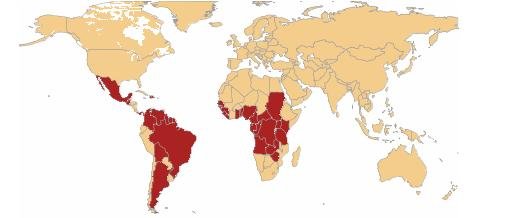
The natural habitat of the vector (blackfly) transmitting this organism is underbrush lining the banks of the fast - moving streams.
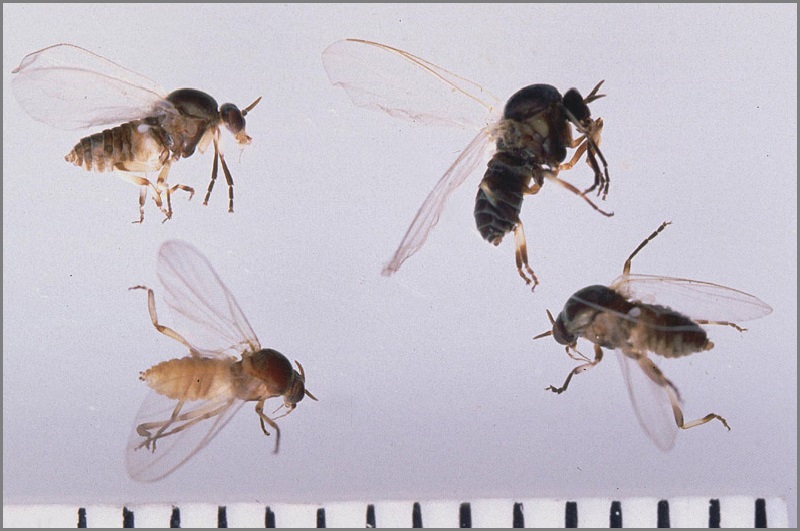
The vector carrying this organism is a day - biting female blackfly of the genus Simulium.
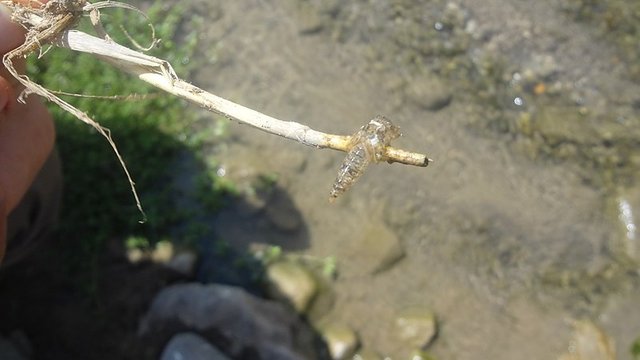
A pupal cocoon of a blackfly (the vector of Onchocerca volvulus) attached to a piece of wood .
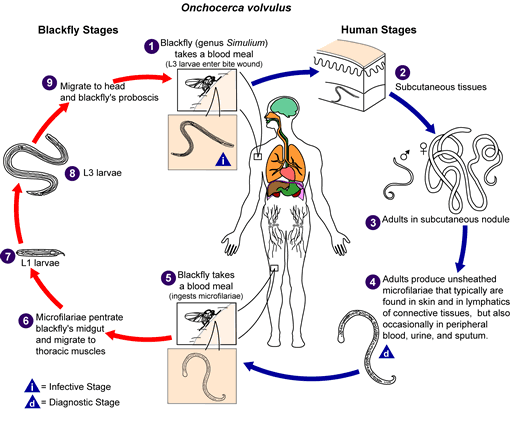
Life cycle of Onchocerca volvulus
During a blood meal, an infected blackfly (genus Simulium) introduces third-stage filarial larvae onto the skin of the human host, where they penetrate into the bite wound. In subcutaneous tissues the larvae develop into adult filariae, which commonly reside in nodules in subcutaneous connective tissues. Adults can live in the nodules for approximately 15 years. Some nodules may contain numerous male and female worms. Females measure 33 to 50 cm in length and 270 to 400 μm in diameter, while males measure 19 to 42 mm by 130 to 210 μm. In the subcutaneous nodules, the female worms are capable of producing microfilariae for approximately 9 years. The microfilariae, measuring 220 to 360 µm by 5 to 9 µm and unsheathed, have a life span that may reach 2 years. They are occasionally found in peripheral blood, urine, and sputum but are typically found in the skin and in the lymphatics of connective tissues. A blackfly ingests the microfilariae during a blood meal. After ingestion, the microfilariae migrate from the blackfly's midgut through the hemocoel to the thoracic muscles. There the microfilariae develop into first-stage larvae and subsequently into third-stage infective larvae. The third-stage infective larvae migrate to the blackfly's proboscis and can infect another human when the fly takes a blood meal.
Signs and symptoms
It forms a movable nodules that occur over anatomical sites where the bone is superficial such as knees , hips, illiac crests, tronchanters, sacrum, ribs, elbows, and scalp.
This organism live in the superficial layers of skin causing itching and thickening of the skin.
Treatment
Treatment consists of surgical removal of detectable nodules (nodulectomy ) . Ivermectin is an effective drug. It is given 150microgram/kg body weight once. It is repeated every 6 - 12 months until asymptomatic.
Prpphylaxis
Onchoceriasis can be prevented by application of insecticides to the streams where the vector Simulium is breeding . Mass chemotherapy as a control measure is not recommended because of its severe side effect.
Thanks to all steemians especially to @surpassinggoogle,@eurogee,@hr1,@gbenga,@arcange,@steemstem,@stemng,@berniesanders,@social,@lastditch,for your incessant support and endorsement
List of image references

Are you sure this is the leading cause of blindness globally? Because according to the World Health Organisation:
Onchocerciasis only constitutes 4% of the overall causes of blindness which means it is not the leading cause of blindness on a global scale.